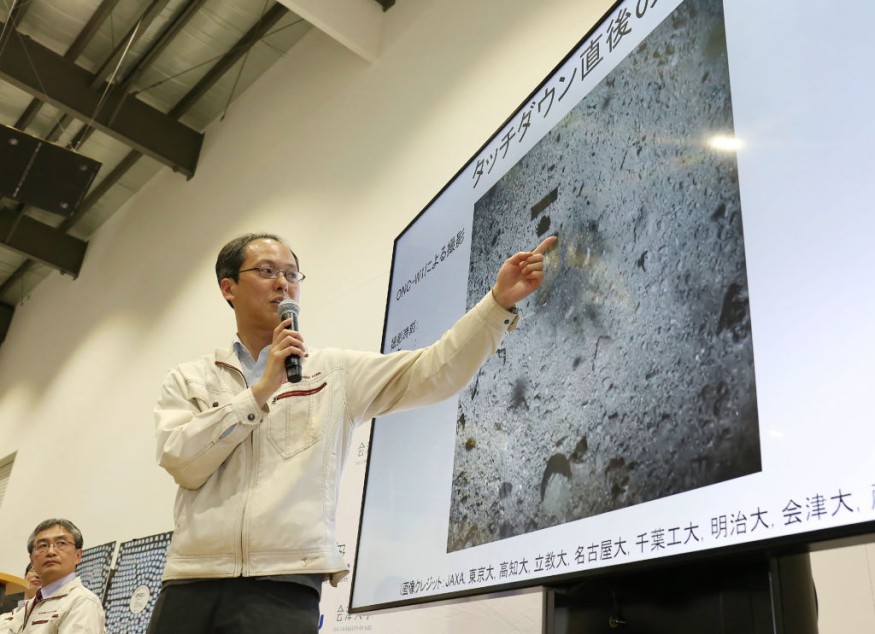An international team of researchers investigating samples from the asteroid Ryugu brought to Earth in 2020 by the Japanese space mission Hayabusa-2. They discovered evidence suggesting the asteroid formed in the outer Solar System, near the region where comets develop.
They also remark in their research, titled "Oxygen Isotopes of Anhydrous Primary Minerals Show Kinship Between Asteroid Ryugu and Comet 81P/WILD2" which was published in the journal Science Advances, that some of the material identified in Ryugu appears to have come from components dragged from the core portions of the solar system to the outer parts.

What Oxygen 16 in Ryugu Sample Tells Scientists
The research team from Hokkaido University in Japan led the group in examining the mineral composition of Ryuguusing a scanning electron microscope and a secondary ion mass spectrometer. According to Science Alert, they focused on the levels of isotopes of oxygen 16.
Noriyuki Kawasaki, a planetary scientist at Hokkaido University, and colleagues wrote in their published paper that oxygen isotopic compositions of primary minerals can provide significant constraints to the space rock's origin.
Ever since the asteroid Ryugu samples reached Earth, various research groups have been studying them to learn about their formation and the origin of the Solar System.
Researchers particularly studied the minerals found in the dust samples and found the oxygen isotope along with carbonate materials, which is known to form in low-temperature, watery environments, suggesting Ryugu may have come from the outer Solar System.
Scientists said it likely formed where comets form, but noted their difference. Whereas comets retain a significant amount of ice as part of their composition given their location of origin, asteroids are made almost entirely of rock.
But Ryugu's carbonate minerals and amino acids suggest that it also formed in a low-temperature region with watery conditions where ice does not easily vaporize, perhaps between Uranus and Neptune. Aside from those minerals, they also identified spinel, olivine, and perovskite in the samples which form at higher temperatures.
The discovery could be explained by the hypothesis that some material in the Inner Solar System traveled to the Outer Solar System away from the Sun, which eventually collided and formed the Ryugu asteroid.
Ryugu Samples May Give New Insights on the Origin of the Solar System
Ryugu asteroid is named after the undersea palace of the Dragon God in Japanese mythology, Study Finds reported. The asteroid measures about 900 meters in diameter and was discovered in 1999 sitting between Mars and Jupiter.
Japan's space agency, JAXA, sent a mission called Hayabusa-2 to the Ryugu asteroid in 2014 to collect samples from its surface and subsurface. Six years later, in 2020, the mission sent back samples that are being studied in various laboratories around the world.
Planetary sciences Professor John Bridges at the University of Leicester's School of Physics & Astronomy and Space Park said that the unique mission to gather samples from the most primitive, carbonaceous blocks of the Solar System would require a detailed microscopy examination that is their scientific team used Diamond's X-ray nanoprobe beamline.
Due to the high-tech equipment, they were able to reveal the nature of space weathering on the asteroid, which is associated with the reduction from oxidized Fe3+ to Fe2+. Analyzing the asteroid's samples and return missions from the moon and Mars will help uncover the history of the Solar System.
RELATED ARTICLE: Asteroid Ryugu Samples Provide More Clues on the History of the Solar System
Check out more news and information on Asteroids in Science Times.












